These underground marvels have captivated generations with their stunning crystals and unique formations. Amidst their breathtaking beauty, a skilled and passionate team stands as underground guardians, working tirelessly to preserve these natural wonders for future generations.
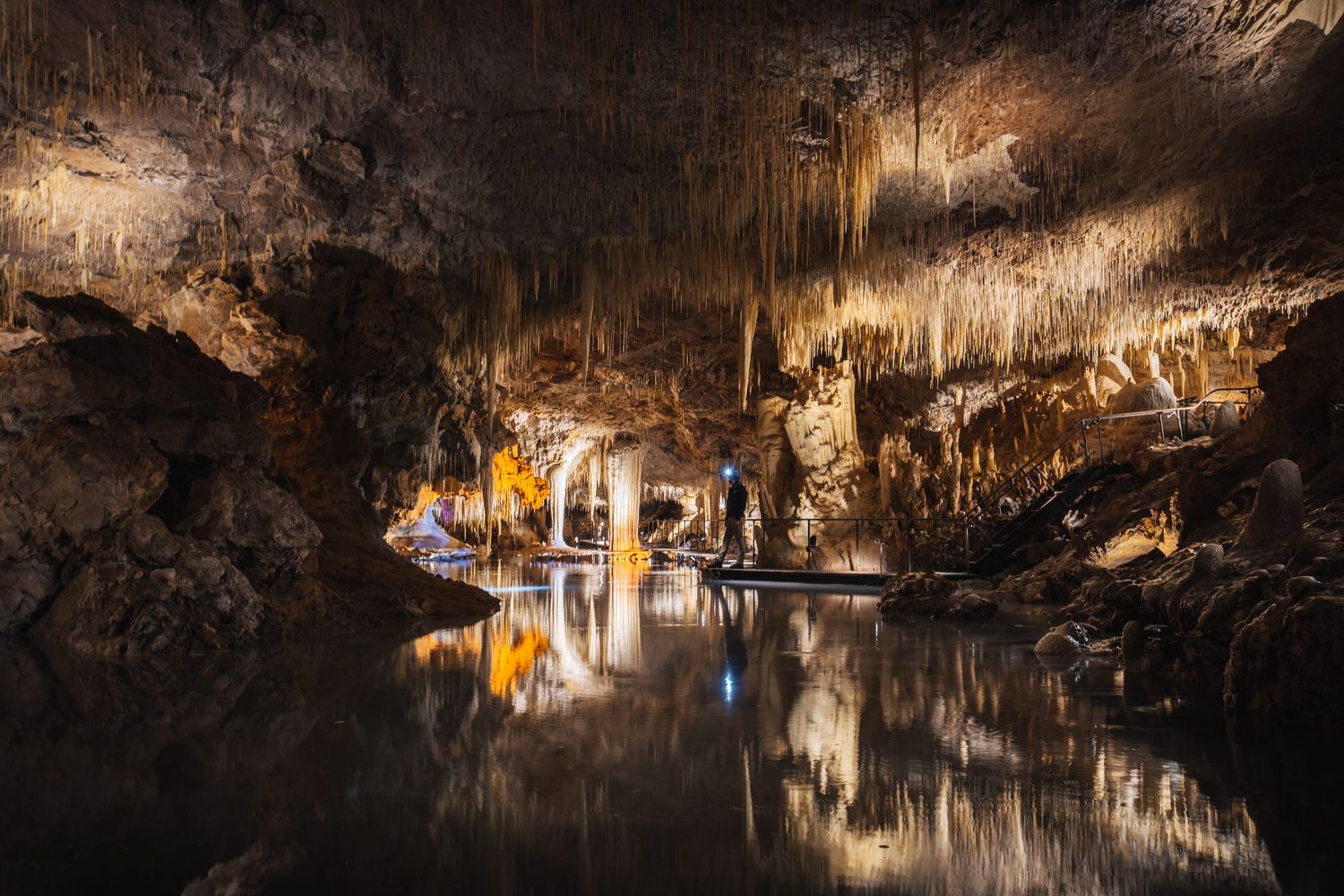
Caring For The Caves Of The Capes
Hidden beneath the picturesque Margaret River Region lie the extraordinary limestone caves of Lake Cave, Jewel Cave, Mammoth Cave, and Ngilgi Cave.
The Margaret River Region is renowned for its captivating scenery and landscape, while the underground vistas hold a magic of their own. Over millions of years, rainwater has gracefully carved its way through the limestone of the Leeuwin-Naturaliste Ridge, resulting in a fascinating network of caves adorned with crystal formations. For cave enthusiasts and nature lovers alike, the region offers an unparalleled opportunity to witness these wonders up close.
The conservation and preservation of these four caves are undertaken by the Capes Foundation, a not-for-profit organisation whose aim is to connect visitors to the natural abundance, historical richness and cultural vibrancy of the region.
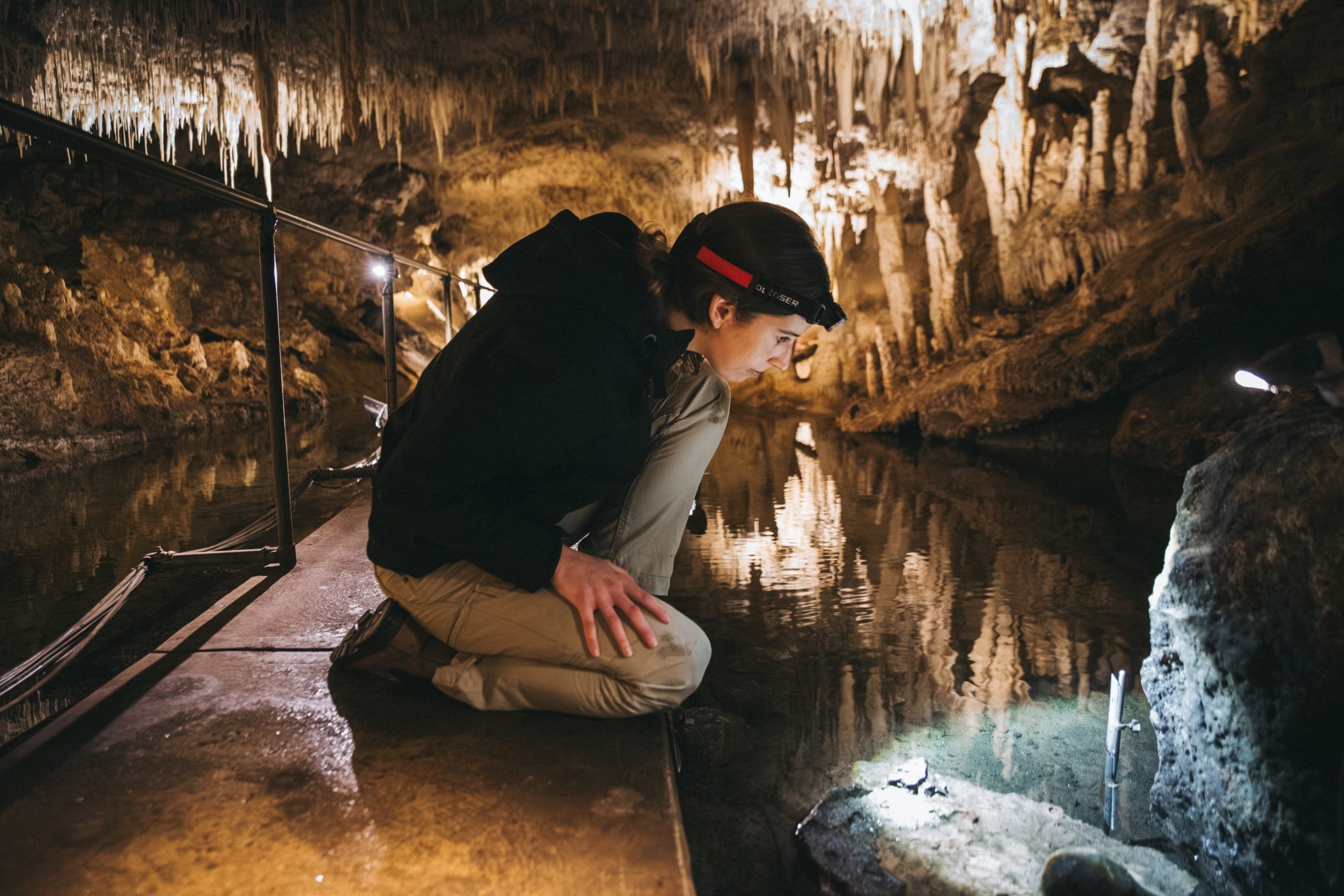
Alysha Johnson coordinates the Capes Foundation Conservation Team who passionately handle these underground treasures with care.
“Preserving these natural assets is our top priority, and we address this through regular baseline maintenance and monitoring. Every three months, our dedicated team and volunteers conduct a thorough vacuuming program to minimise the impact of dust. A dust monitoring system helps us prioritise areas within the cave that need attention. Lint, hair, skin and dust all have an impact on the caves, so it is a crucial tool to preserving these wonders.”
Beyond dust control, the team adopts a comprehensive water conservation approach.
“Our hydrology program collects data on water levels and quality in the caves and nearby areas, including adjacent properties. This information serves as a guide to sustain the current water levels in Lake Cave and assess the condition of stygofauna, aquatic animals that live in groundwater.”
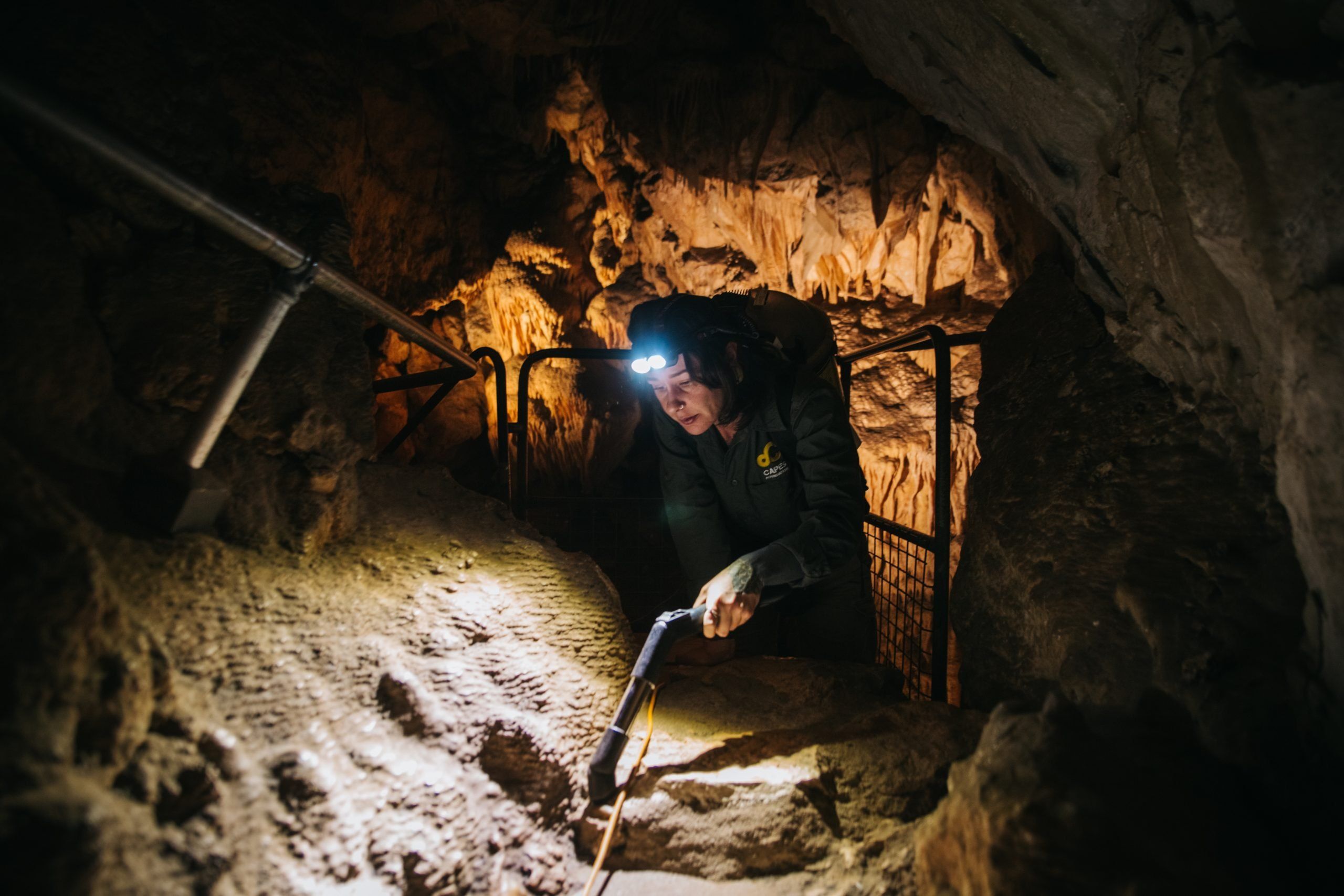
The caves draw thousands of visitors annually, eager to explore the enormous chambers of Jewel Cave, marvel at the ancient megafauna fossils in Mammoth Cave, wonder at Lake Cave’s reflective waters, and descend into the exquisitely decorated Ngilgi Cave.
The visitor experience varies from cave to cave; Jewel and Lake Caves offer fully guided tours led by skilled guides who illuminate the stories and science of the caves. Mammoth Cave is self-guided with insights from a multi-lingual audio tour, and Ngilgi Cave offers a unique above and below-ground experience.
Some caves, like Ngilgi, have welcomed visitors for over a century, evolving towards more conscious exploration.
“We’ve learned to tread lightly. Preserving caves involves monitoring relics left by past generations and carefully removing deteriorating materials that will impact the cave. The tours are a valuable tool to educate the visitors and locals on how to keep the amazing caves as you find them.”
While conservation is crucial, the Capes Foundation places equal emphasis on advocacy and education. Their goal extends beyond preservation – it’s to foster a deep appreciation for these unique wonders. By nurturing this connection, they inspire advocates who will champion these treasures for generations to come.
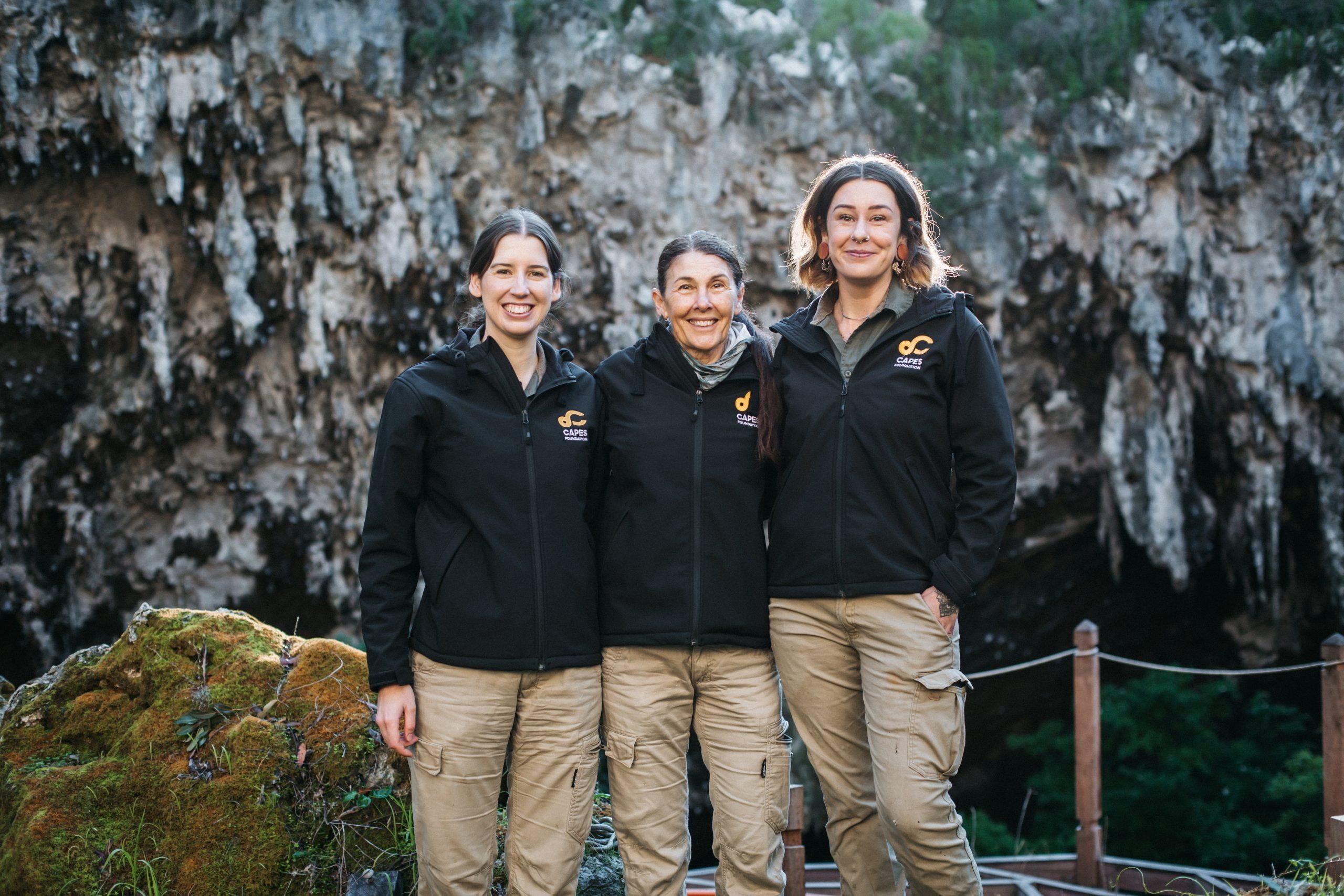
As its name suggests, Lake Cave is renowned for its crystal-clear water, which not only creates beautiful reflections of the dazzling crystal cave formations but also serves as a habitat for endangered species of stygofauna. These microscopic aquatic animals live within the cave and survive by eating whatever drifts their way, be it decomposing insects, tree roots, or small debris. Most of these stygofauna measure less than a millimetre in length, and have become adapted to the darkness, lacking both eyes and pigmentation. It is possible that some of these species are unique to Lake Cave.
The water within the cave originally falls as rain to the east of the coastal limestone ridge. That rainwater is absorbed into the ground and then moves through the many cracks, fissures and caves in the porous limestone until it reaches the coast. The quantity of water entering the ground and passing through the limestone directly affects the lake’s water level within the cave.
In the early 2000s, water levels began to significantly decrease, posing a threat to the survival of the stygofauna and diminishing the prominence of the iconic crystal reflections. Since 2010, the Margaret River Busselton Tourism Association, which has since established the Capes Foundation, launched an extensive monitoring and research program aimed at recording and explaining the changing cave water levels.
Through this research, it became evident that the type and intensity of surface vegetation in the catchment to the east of the limestone ridge was having a major influence on the amount of groundwater entering the limestone system and flowing through caves, such as Lake Cave. Patterns in the growth and harvesting of nearby blue gum plantations also suggest a link to changing water levels.
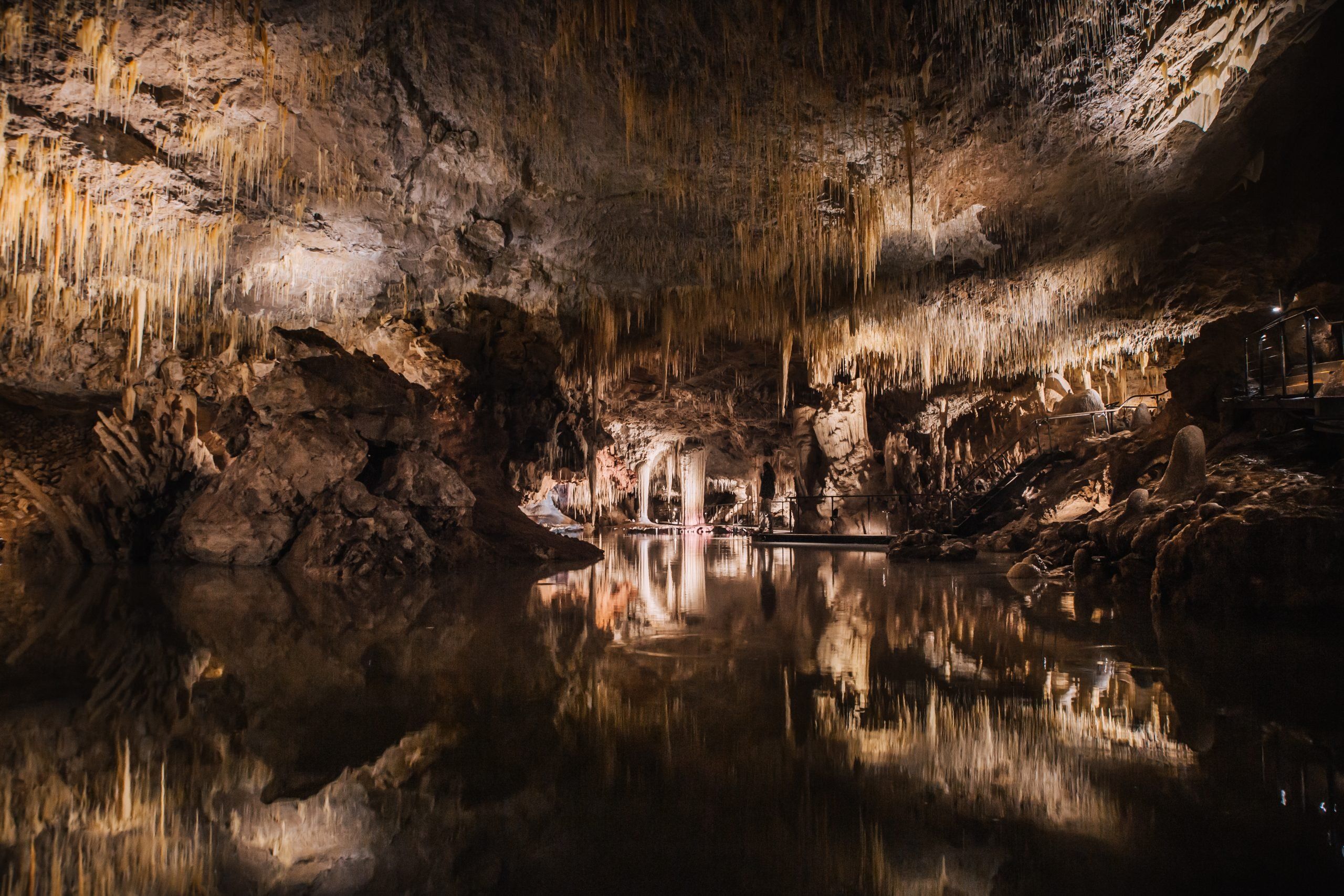
The widespread, intense bushfires in 2010 have clearly demonstrated the connection between surface vegetation and underground water flows. The bushfires removed a large percentage of vegetation, allowing rain to infiltrate the ground without being absorbed by plants. The result is that the 2022/23 water level in Lake Cave is at its highest level in many decades. It is likely that this level will once more recede as the forest and surrounding land return to their previous levels of vegetation growth.
Caves hold a certain reassurance in their timeless existence, bearing witness to passing fires and floods – a subterranean archive of seasons long past – a natural reflection of the region’s ever-evolving landscapes.
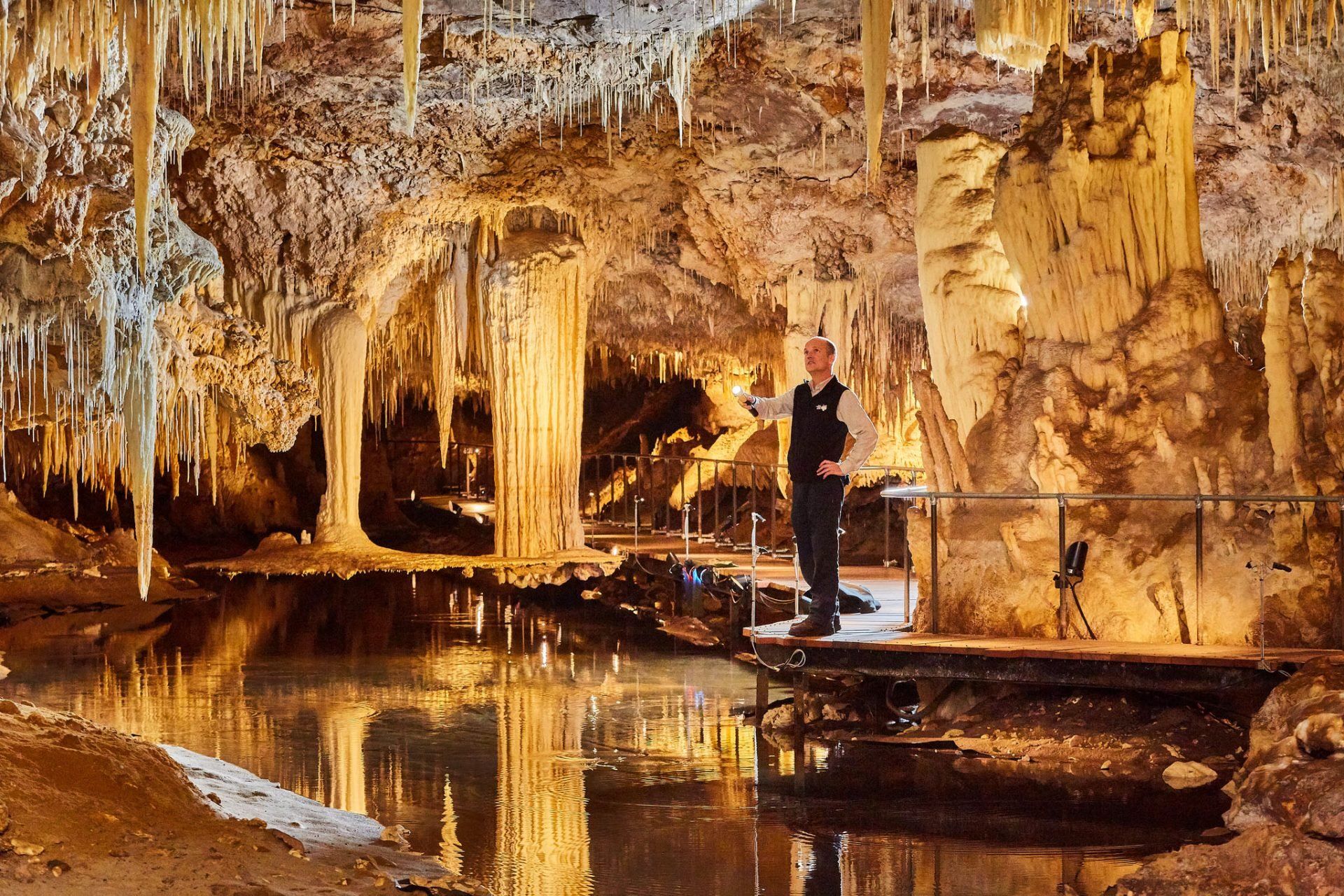
- Jewel Cave – The largest show cave in Western Australia, entering Jewel Cave is like finding yourself inside a lofty natural cathedral.
- Lake Cave – Enter this crystal wonderland via steps descending into a giant sunken entrance among ancient Karri trees.
- Mammoth Cave – This natural time capsule offers an extraordinary insight into Australia’s ancient past
- Ngilgi Cave – This exquisitely decorated cave was Western Australia’s first tourist attraction.





